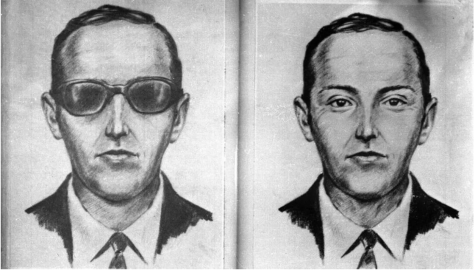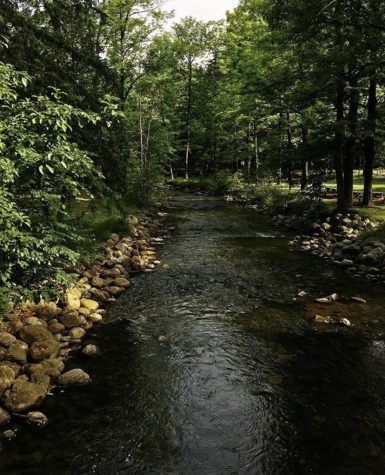The Chilling Case of the Appalachian Trail Killer
On May 6, 2008, best friends Scott Johnston and Sean Farmer went on a fishing trip in Dismal Creek, Virginia, on the Appalachian Trail, an area they had frequented for many years. Johnston went fishing alone early on May 6 and intended to meet up with Farmer in the early evening by the campsite.
While fishing, another fisherman, who went by Ricky Williams, introduced himself to Johnston. Both Johnston and Farmer assumed that the man was lying and using a fake name. Johnston described this man as “sort of straggly looking” and gaunt. While the man looked to have been living in the woods for a couple of days, he was wearing an expensive camouflage jacket and new hiking boots. Johnston added that while he believed that the man might have been an alcoholic, he seemed harmless. The two spent the whole day fishing together and reportedly caught a lot of trout. Being a friendly guy, Johnston invited his new friend (and his dog) back to his campsite to meet Farmer and stay for dinner.
Back at the campsite, Farmer built a fire and waited for Johnston to return. Williams explained that Johnston had invited him over and sat down beside the fire with Farmer. At the time, Farmer reported that he didn’t think anything of the man other than that he was skinny and his dog looked malnourished. When Johnston returned, they ate together, listened to music and generally had a good time.
As darkness started to fall over Dismal Creek, Williams stood up and walked around to stand between Farmer and Johnston. He called for his dog to follow him and walked away from the campsite. The next thing Farmer remembered was a loud boom and his left ear ringing. Williams had shot him in the left side of his face with no warning. Farmer — 6 feet 4 inches and 325 pounds — staggered but did not collapse. He turned around and saw that the man pointed and shot a .22 caliber gun at Johnston, who fled toward a cluster of trees behind the tent.
When he heard the first gunshot, Johnston started running and later said he never saw the gun. He only realized he had been shot when he reached the trees and stopped to catch his breath. Johnston felt for the hole in his neck and plugged it with his right index finger out of pure instinct. Then, as he fixed his attention back on the campsite, he saw Farmer face his attacker. Williams shot him in the chest at a range of about 10 feet. Farmer turned on a dime and ran for his car; Williams followed him, still silent. Finally, Farmer started his Jeep and drove toward the main road. Johnston saw Farmer fleeing in his car and took off toward the road to meet him, crashing through the underbrush while still plugging his bullet wound. Unknown to him, he had also been shot in the back.
As soon as Farmer turned onto the main road, he saw Johnston standing there, covered in blood. He stopped and let Johnston into the car. The pair were 5-6 miles away from the nearest house and another 40 miles from the closest hospital.
They sped down a dangerous road with sharp turns, no guard rail and deadly drop-offs at 45 miles per hour. Their escape plan was going relatively well until Farmer began to lose sight in his right eye. At that point, Johnston steered the car while telling Farmer when to work the gas and brake pedals. They made it to the bottom of the mountain, where there were only five houses. At the first house with lights still on, Farmer put the car in park in the middle of the street and Johnston banged on the door, pleading for someone to call the authorities.
Initially, the homeowner thought it might be a home invasion, but Melissa Miller finally came outside after she recognized Farmer as her friend’s ex-boyfriend. She helped Farmer out of the car and held towels to their wounds. The Giles County Police Department (GCPD) arrived quickly and helicopters brought Farmer and Johnston to the hospital. Johnston recalled a paramedic reporting that he didn’t have a pulse at one point during the flight.
Doctors told Farmer that he was fortunate: the bullet that entered his face had lodged in his sinus cavities, while the one in his chest entered between two ribs, and the muscle mass in his chest had pushed the bullet aside and away from his heart. He was in recovery by 4 a.m. on May 7 when the police interviewed him. The police told him that their attacker had fled the scene in Johnston’s truck (that was left behind with the keys in the ignition), and when the police caught up to him, he drove off an embankment in what they thought was a suicide. Luckily, he lived and the police had him in custody in the hospital.
The man that had attacked Johnston and Farmer was Randall Lee Smith. In 1981, Smith had killed two hikers in the same area earning him the moniker of the Appalachian Trail Killer. Smith plead guilty to two counts of second-degree murder in ’81 for killing Laura Susan Ramsey and Robert Mountford Jr. by shooting, bludgeoning and stabbing them before burying them in their sleeping bags. He was paroled in 1996.
When the GCPD searched the area, they found a cache of items belonging to Smith. It was an outstanding aggregate of items, some meaningful, some bewildering and some rather chilling. They found his GED certificate obtained in prison and his birth certificate in the brush. They also found a copy of law-enforcement radio 10-codes and a police scanner, a plastic molded contour map of the area that had several places marked in pencil. They could not explain the cassette tape that GCPD said contained “some kind of satanic ritual.” Finally, they recovered several eyeglasses, clothes of various styles and sizes, eight pairs of women’s underwear and over 30 knives. They ran DNA tests on his clothes, underwear and knives and came up with nothing. They also searched the areas marked on Smith’s map and could not locate anything suspicious or pertinent.
Four days after his arrest, Smith died in jail of natural causes. which put a verifiable end to the case.
Johnston attributes Smith’s death at 54 years old to karma.
Farmer believes that Smith has claimed more victims than those identified in 1981.
Despite this traumatizing night, Johnston and Farmer still spend evenings fishing together at Dismal Creek.

Copy Chief emerita volume 101, Production Editor emerita volume 102 and 103
Vanessa DeJesus is a senior at Fordham College at Rose Hill, double majoring...










































































































































































































